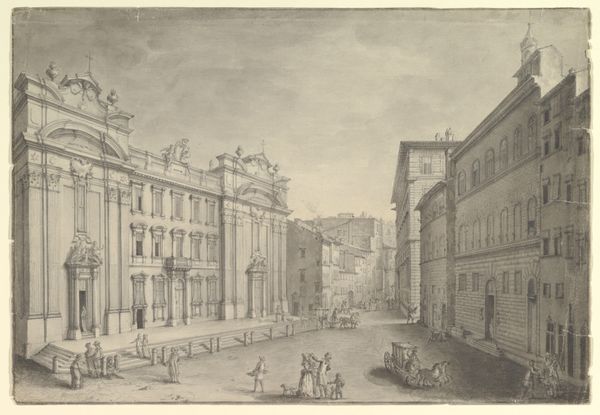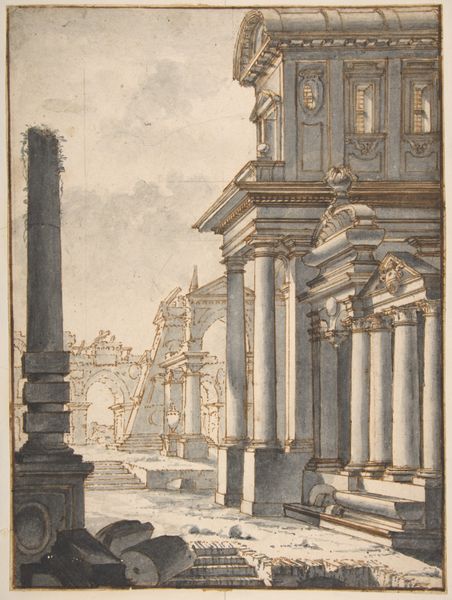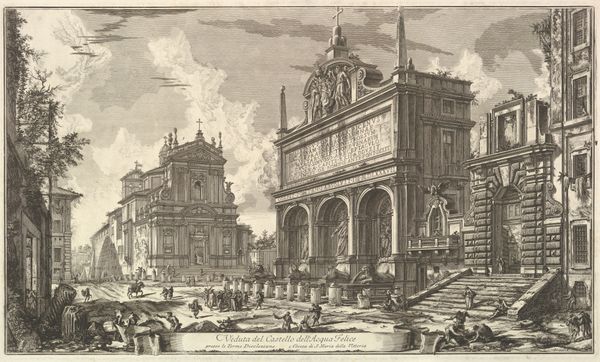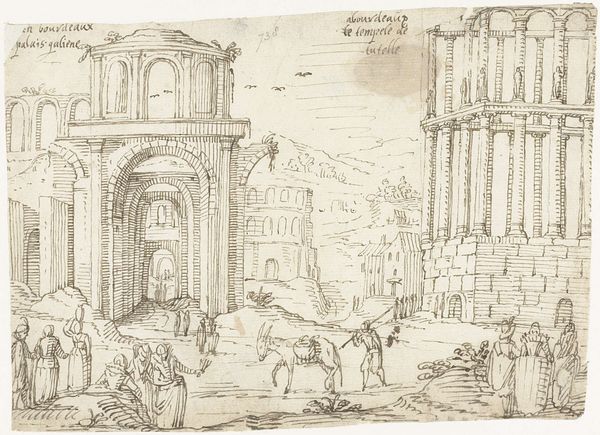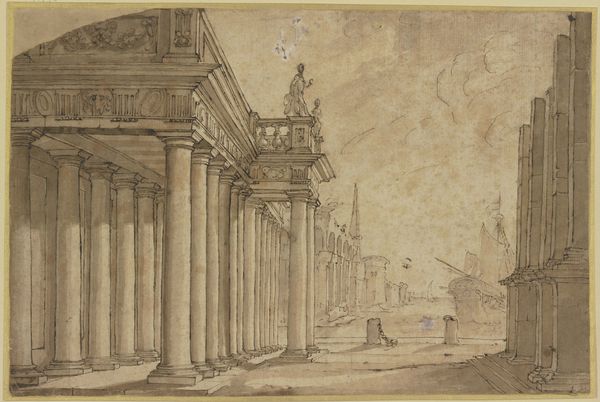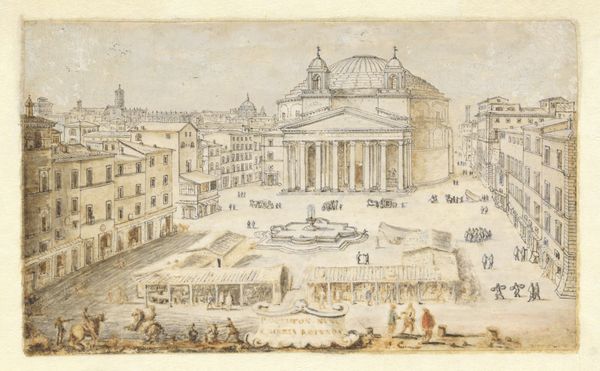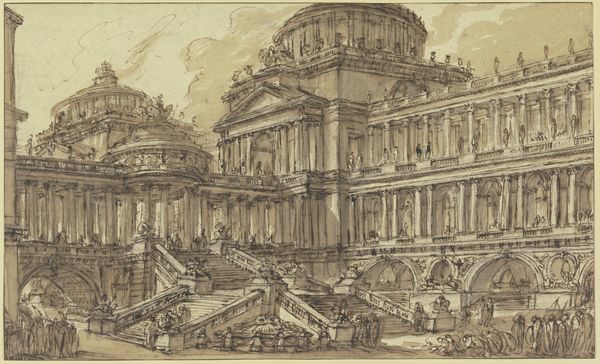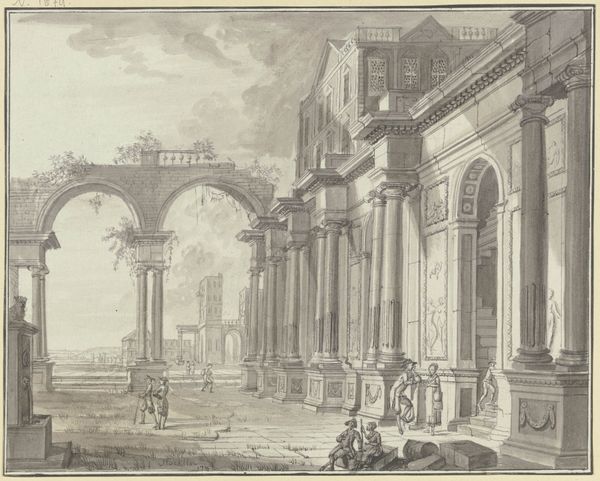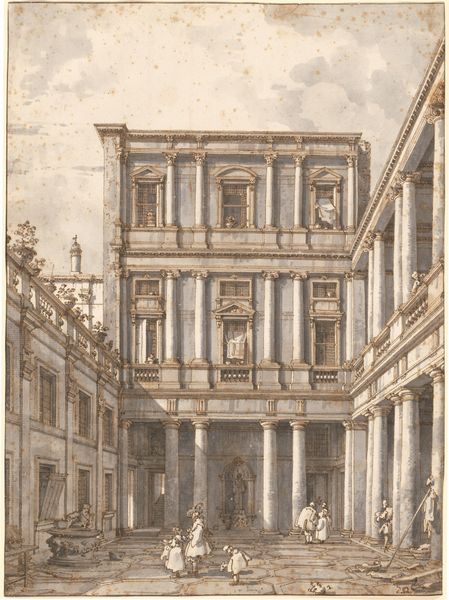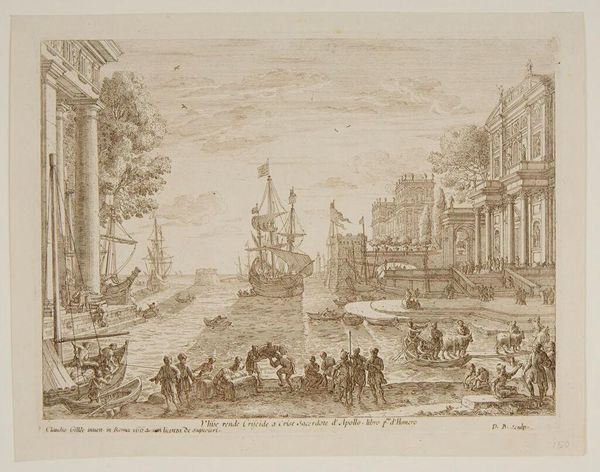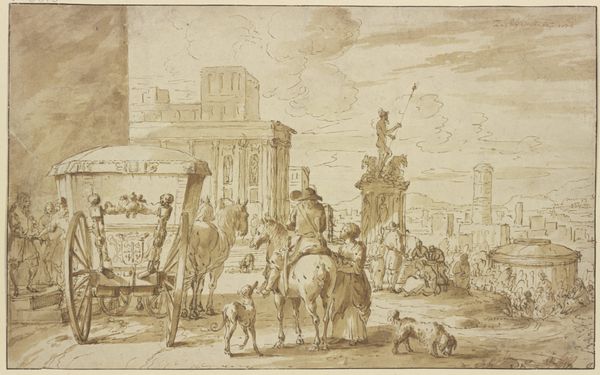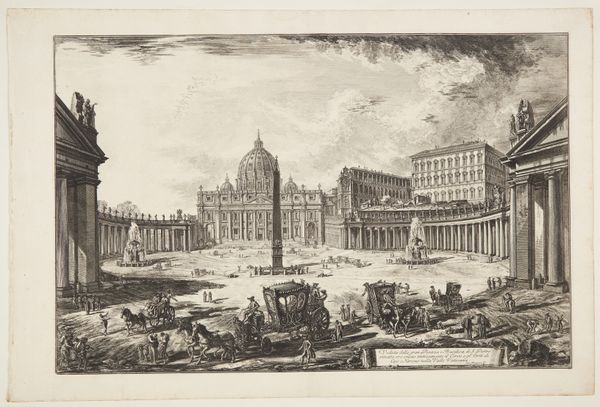
Gezicht op een stadsplein vol mensen, waar een man wordt bekroond 1637 - 1689
0:00
0:00
drawing, ink, architecture
#
drawing
#
baroque
#
ink
#
cityscape
#
genre-painting
#
history-painting
#
architecture
Dimensions: height 288 mm, width 416 mm
Copyright: Rijks Museum: Open Domain
Curator: Jacob van der Ulft rendered this drawing, "Gezicht op een stadsplein vol mensen, waar een man wordt bekroond"—or "View of a city square full of people, where a man is crowned"—sometime between 1637 and 1689, using ink. Editor: It’s undeniably Baroque, a real feast for the eyes. I’m immediately drawn to the interplay of light and shadow, even with the monochromatic ink wash, creating a sense of depth and drama. It looks as if the artist paid really close attention to the material qualities of urban life. Curator: Van der Ulft was quite fond of architectural studies. Think about how the ink drawing medium lent itself well to replicating architectural plans as well as lively genre paintings—an accessible means for him to build a career based on craft and technical skill. He combined both here, incorporating a lively historical moment. Editor: Indeed. Beyond the drawing’s masterful technique, one has to wonder: Who is being crowned, and what sociopolitical forces are at play here? It really strikes me, the theatrical display of power and celebration amidst the backdrop of monumental architecture. Is this an endorsement, or perhaps a subtly critical comment on the relationship between power, public spectacle, and urban space? I note the varied reactions across the social classes. Curator: Given that van der Ulft never traveled to Italy but painted many scenes in the Italian style, we might assume he wasn't overly invested in verifiable historical or social context. The labor was more likely focused on acquiring perspectival skills and in employing drawing as a kind of visual record that held intrinsic value and aesthetic appeal. Editor: I can see your point; at the same time, consider how the image reproduces social and political hierarchies so readily, whether deliberately or not. What can its consumption teach us about the relationship between artist, patron, and subject during the Dutch Golden Age? Curator: Ultimately, the ink and the technique employed by van der Ulft speak to an expanding and lucrative art market catering to the era’s obsession with both the classical world and views into contemporary society. Editor: And it's a compelling reflection on urban spectacle. There's a quiet intensity in how the scene unfolds, which for me sparks essential questions about cultural and social identities throughout the ages.
Comments
No comments
Be the first to comment and join the conversation on the ultimate creative platform.
